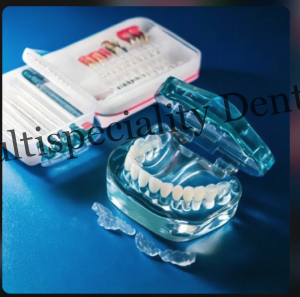- Mon-Sat :9:30am-1:00pm | 4:30pm-8:00pm.
- +91 9443092162
- thebanudentalclinic@gmail.com
Invisible Braces: A Clear Path to a Beautiful Smile
13/03/2025Deep Teeth Cleaning for a Brighter, Healthier Smile
29/03/2025Root Canal Treatment: Save Your Tooth, Relieve Pain
Root canal treatment is a highly effective dental procedure that can save a damaged or infected tooth while providing relief from severe pain. Despite common misconceptions, modern root canal therapy is safe, relatively painless, and helps restore oral health. In this comprehensive guide, we’ll explore what root canal treatment involves, its benefits, the procedure itself, and essential aftercare tips.RootCanal Treatment in Kumbakonam

What Is Root Canal Treatment?
Root canal treatment (endodontic therapy) is a dental procedure performed to treat infection or damage inside a tooth. The procedure involves removing the infected pulp, cleaning and disinfecting the tooth, and sealing it to prevent further infection. Root canals are often necessary when deep decay, cracks, or trauma affect the tooth’s pulp.
Root Canal Treatment: Save Your Tooth, Relieve Pain
Why Is Root Canal Treatment Necessary?
When the soft tissue inside the tooth (pulp) becomes inflamed or infected, it can cause severe pain and lead to further dental problems if left untreated. Root canal therapy is required to:
Relieve Pain: Eliminate discomfort caused by infection or inflammation.
Save the Tooth: Prevent the need for extraction and maintain natural teeth.
Prevent Infection Spread: Stop the infection from spreading to surrounding tissues and teeth.
Restore Function: Allow the tooth to function normally for biting and chewing.
Signs You May Need a Root Canal
If you experience any of the following symptoms, consult your dentist to determine if a root canal is needed:
Persistent toothache, especially when chewing.
Sensitivity to hot and cold temperatures.
Swollen or tender gums near the affected tooth.
Darkening or discoloration of the tooth.
Pimple-like bumps on the gums (dental abscess).
Early detection and treatment can prevent complications and preserve your oral health.
The Root Canal Procedure: Step by Step
Diagnosis and X-ray: Your dentist will examine your tooth and take X-rays to assess the extent of the damage and plan the treatment.
Anesthesia: Local anesthesia is administered to numb the area and ensure a pain-free experience.
Pulp Removal: An opening is made in the tooth, and the infected or damaged pulp is carefully removed.
Cleaning and Shaping: The root canals are cleaned, disinfected, and shaped to prepare for filling.
Filling the Canals: The cleaned canals are filled with a biocompatible material (gutta-percha) to seal them and prevent reinfection.
Restoration: A temporary or permanent crown is placed to protect the tooth and restore its function.
How Long Does a Root Canal Take?
The procedure typically requires one or two visits, depending on the complexity. Each visit lasts between 60-90 minutes. Your dentist will guide you on the expected timeline based on your condition.
Benefits of Root Canal Treatment
Pain Relief: Eliminates the source of pain and discomfort.
Tooth Preservation: Saves the natural tooth, maintaining your smile and bite.
Improved Oral Health: Removes infection, preventing further complications.
Enhanced Appearance: A dental crown restores the tooth’s natural shape and aesthetics.
Cost-Effective: Root canals are often more affordable than tooth extraction and replacement.
Root Canal vs. Tooth Extraction
| Feature | Root Canal Treatment | Tooth Extraction |
|---|---|---|
| Tooth Preservation | Saves the natural tooth | Removes the tooth |
| Pain and Recovery | Minimal pain, faster recovery | May require more healing time |
| Cost | Often less expensive than replacing a tooth | Additional costs for implants or bridges |
| Oral Function | Retains normal biting and chewing function | May require a replacement for proper function |
Root canal treatment is generally the preferred option when the tooth can be saved, as it maintains your natural smile and oral structure.
Aftercare Tips for Root Canal Recovery
Manage Discomfort: Mild pain is normal after treatment. Use over-the-counter pain relievers as prescribed.
Maintain Oral Hygiene: Brush and floss gently around the treated tooth to keep the area clean.
Avoid Hard Foods: Stick to soft foods to prevent damaging the treated tooth.
Follow-Up Visits: Attend all follow-up appointments to ensure proper healing and crown placement.
Protect the Tooth: Consider a dental crown for additional strength and protection.
Common Myths About Root Canal Treatment
Myth: Root canals are painful.
Fact: Modern techniques and anesthesia make the procedure comfortable and pain-free.Myth: Tooth extraction is better.
Fact: Saving your natural tooth is healthier and prevents complications from missing teeth.Myth: Root canals cause illness.
Fact: There is no scientific evidence linking root canal treatment to systemic health issues.
How to Prevent the Need for a Root Canal
Practice Good Oral Hygiene: Brush twice daily, floss regularly, and use mouthwash.
Routine Dental Visits: Schedule regular check-ups and cleanings for early detection of issues.
Protect Your Teeth: Use a mouthguard during sports and avoid chewing hard objects.
Address Dental Problems Promptly: Treat cavities and minor dental issues early to prevent progression.
When to See a Dentist
Seek immediate dental care if you experience:
Persistent or severe tooth pain.
Swelling in the gums or face.
Tooth sensitivity that lingers.
Visible damage or cracks in a tooth.
Prompt treatment can prevent further complications and preserve your oral health.
Conclusion
Root canal treatment is a safe and effective procedure to save your tooth and alleviate pain. By addressing infection and restoring your tooth’s function, it helps maintain your natural smile and improves oral health. If you’re experiencing symptoms of tooth infection, consult your dentist promptly to explore your options. With proper care and timely intervention, a root canal can give your tooth a second chance and keep your smile bright and healthy for years to come.
